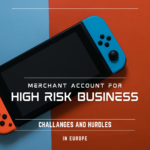In the realm of finance, particularly when it comes to merchant accounts, the term “high-risk business” is often thrown around. But what exactly does it mean?
Essentially, a high-risk business is any enterprise that poses a higher-than-average risk of financial loss to a payment processor. This increased risk can stem from various factors, including:
- High chargeback rates: Industries with frequent disputes and refunds, such as online gaming, adult entertainment, or digital goods.
- Fraud vulnerability: Businesses handling sensitive financial information or dealing with large transaction volumes, like online retailers or cryptocurrency exchanges.
- Regulatory challenges: Sectors subject to strict regulations, such as gambling, pharmaceuticals, or financial services.
- Market volatility: Industries prone to economic fluctuations, such as travel or luxury goods.
Why Are Some Businesses Considered High-Risk?
The reasons behind a business being categorized as high-risk are often linked to inherent industry characteristics. For example:
- Online gaming: This industry often deals with virtual goods and has a higher propensity for chargebacks due to disputes over game outcomes or purchases.
- Adult entertainment: The nature of the products or services offered can lead to increased fraud and chargebacks.
- Cryptocurrency exchanges: The volatile nature of cryptocurrencies and the potential for fraud make this sector particularly risky for payment processors.
- Travel: Due to factors like cancellations, refunds, and chargebacks for disputes over services, the travel industry is considered high-risk.
The Impact of Being a High-Risk Business
Being labeled a high-risk business can have significant implications. It can be challenging to find a merchant account provider willing to work with you, and those that do often charge higher processing fees. Additionally, there might be stricter requirements for account setup and ongoing compliance.
However, it’s essential to note that not all businesses within a high-risk business category are inherently bad. Many operate legally and ethically, and with proper risk management, it’s possible to mitigate the challenges associated with being high-risk.
Mitigating High-Risk Business Challenges
If your business falls into a high-risk category, there are steps you can take to improve your chances of securing a merchant account and reducing associated costs. These include:
- Choosing the right payment processor: Look for providers specializing in high-risk businesses.
- Implementing robust fraud prevention measures: Protect your business and customers from fraudulent activities.
- Providing excellent customer service: Minimize chargebacks by addressing customer issues promptly.
- Maintaining detailed records: Accurate financial documentation can help build trust with payment processors.
By understanding the factors that contribute to a business being classified as high-risk and taking proactive measures, you can increase your chances of success in the competitive world of payments.



